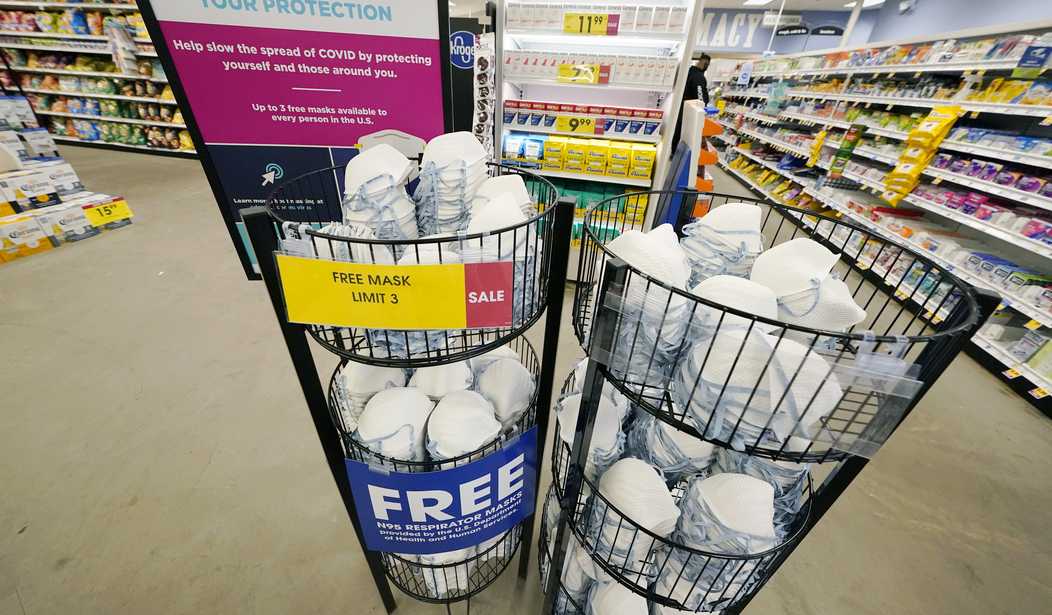Who are you going to believe - President Joe Biden or your lying eyes? That's the choice as Biden runs for re-election.
The Biden campaign is determined to tell tall tales. One favorite is that the economy is humming right along and consumers are reaping the results. This is news to most of us who live in the real world. One basic point of comparison is that of grocery prices. Everyone knows that trips to their local grocery store come with sticker shock on purchases. Any number of items that were purchased last month, or last week, may have gotten more expensive during your trip to re-stock this week.
Joe Biden and his surrogates can talk about the economy gaining steam but American consumers aren't feeling it. The Wall Street Journal did a deep dive into the cost of groceries. The truth is that $100 does not go as far as it did five years ago. $100 only goes half as far as it did five years ago. That's the hard reality for families struggling to make ends meet. It is not easy to get the items on a grocery list and fill up a cart with what a family needs.
About 60% of Americans say they are living paycheck to paycheck in Biden's America. It is insulting for Biden and the people around him to insist that happy days are here again. They are all bubble-dwellers who likely haven't been inside a grocery store since they began to work in the White House. The basic cost of living doesn't bother them.
Here's the truth - prices for hundreds of grocery items have increased more than 50% since 2019. Executives say that higher prices are necessary to offset rising costs for ingredients, transportation, and labor. There is shrinkflation (which has been happening for years) to contend with, too. Food companies put less quantity in packages but the price remains the same. Biden discovered shrinkflation with a Snickers bar during the Super Bowl. Well, one of his staffers noticed and told him. Everyone else knew shrinkflation began in earnest several years ago.
Consumers push back by going to generic brands instead of sticking with name brands or simply not purchasing the item. So more deals are being offered to customers. Some companies are offering cost reductions, like coffee and butter. I haven't seen a decrease in coffee prices in my stores, frankly, and I'm waiting for that development.
Most companies are expecting you to just get used to the higher prices.
Consumers have also become creative to cope with a stretch of record food inflation. Sharon Faelten, a 74-year-old retiree from Underhill, Vt., said that instead of a wallet-punishing ordeal, she tries to think of trips to the store like procurement raids depicted in apocalyptic novels, where the goal is to stock her fridge, freezer and pantry for as little money as possible.
“Chicken is always on sale somewhere,” Faelten said. She has managed to keep her grocery bills to prepandemic levels, she said, but it takes a lot of work.
The price of food and household staples continues to weigh heavier on consumers’ minds than other economic concerns, although survey data indicate that those fears are ebbing. Some food company executives have said that shoppers will adjust over time to higher prices, as they have in the past.
Yeah, most prices aren't coming back down. It may happen on some items, as it has for eggs in a lot of areas, but not many other items.
If you have $100 to spend, you have to put back $37 worth of groceries before checking out. $100 of groceries in 2019 now costs $137. Items like sports drinks are up 80%. That may not be a necessity for many families but if there are kids who play sports or do outdoor activities in the house, they see it as a necessity.
Prices increased by one percent from February 2023 to February 2024. The most dramatic jump, though, took place from 2022 to 2023. That increase was a whopping 10.2 percent.
In 2019, during Donald Trump’s presidency, the average price of a dozen eggs was $2.36 — or $1.48 cheaper than the $3.84 average cost today under Joe Biden.
Laundry detergent, meanwhile, has seen one of the largest price jumps today compared to five years ago.
In 2019, a bottle of detergent cost on average $7.83. Today, it costs $10.66 — an increase of $2.83.
A gallon of milk cost $2.73 in 2019, but is $0.52 more expensive today, at $3.25.
Butter, which sold for $3.78 on average five years ago, is nearly $1 more expensive today — as are a bag of potato chips, which have spiked to $3.26, compared with $2.26 in 2019.
Inflation is still high and February's Consumer Price Index inched up from January. Energy costs are high and that affects transportation costs for goods. It all adds up.
In pre-pandemic days, price increase rates were much smaller. In February 2019, grocery prices rose 1.2% year-over-year. That rate of increase is 21% over the last three years.
It doesn't look like any changes in favor of customers are coming any time soon. Break out the coupons and hunt for deals every week.








Join the conversation as a VIP Member